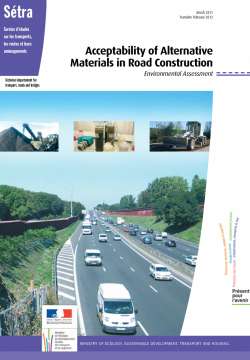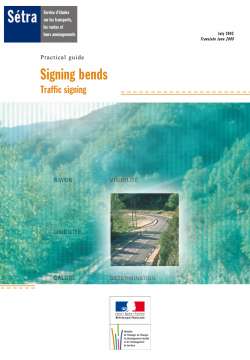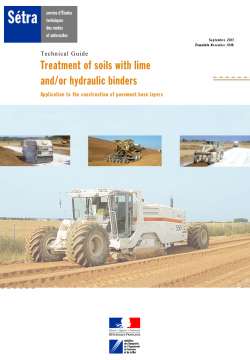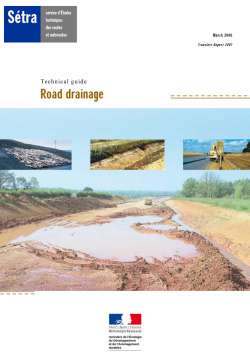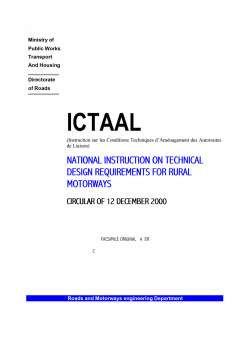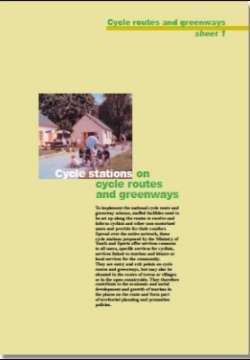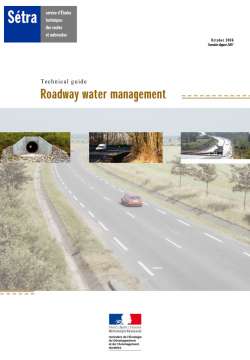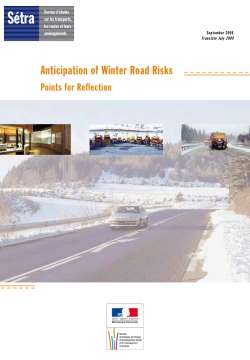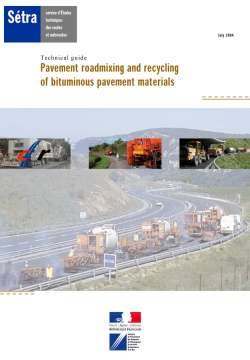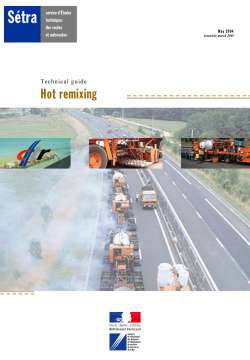
Technical guide – Hot remixing
Ever-increasing economic and environmental constraints arepushing road professionals to take an interest in potential naturalmaterial deposits that exist in pavements being demolished orrenovated.
Techniques known as hot remixing, hot reforming or repaving aregrouped under the single term of in situhot remixing.
This termgroups all the in situbituminous asphalt recycling operations byheating, pavement scarification, mixing with or without additions and re-laying the mix.
Ever-increasing economic and environmental constraints arepushing road professionals to take an interest in potential naturalmaterial deposits that exist in pavements being demolished orrenovated.
Techniques known as hot remixing, hot reforming or repaving aregrouped under the single term of in situhot remixing.
This termgroups all the in situbituminous asphalt recycling operations byheating, pavement scarification, mixing with or without additions(aggregates with or without pre-coating, binders, additives, etc) andre-laying the mix.
Contents
Contents............................................................................................................................................... 5
Why in situ hot remixing?..................................................................................................................7
Equipment ........................................................................................................................................... 8
Pre-heaters ....................................................................................................................................... 8
Scarification/mixing and laying machines ..................................................................................... 10
First type ................................................................................................................................. 10
(Figure 3) comprises, apart from new heating panels ............................................................ 10
Second type.............................................................................................................................. 11
(Figure 4) differs from the first through its type of cohesion breaker and its mixing method. 11
Third type ................................................................................................................................ 13
(Figure 5) is identical to the second for the cohesion breaking and mixing, with in addition 13
Laying ............................................................................................................................................ 13
Preliminary studies........................................................................................................................... 14
Characterization of materials in situ.............................................................................................. 14
Processing study............................................................................................................................. 15
Formulation testing ........................................................................................................................ 15 Inspections......................................................................................................................................... 17
Scope .................................................................................................................................................. 18
Performances and behavior ............................................................................................................. 20
Sensitive points ................................................................................................................................. 22
Future of the technique .................................................................................................................... 23
Appendix 1 ........................................................................................................................................ 25
Rejuvenating agents ......................................................................................................................... 25
Appendix 2 ........................................................................................................................................ 27
Sample formulation studies ............................................................................................................. 27
Study consistency........................................................................................................................... 27
Actual study scenarios, examples .................................................................................................. 27
Preliminary survey .................................................................................................................. 28
Objectives of the special technical specifications ................................................................... 29
Correcting agents.................................................................................................................... 29
Hot remixing study .................................................................................................................. 29
Preliminary survey .................................................................................................................. 33
Formulation study ................................................................................................................... 34
Comments................................................................................................................................ 35
Site........................................................................................................................................... 36
Preliminary survey .................................................................................................................. 37
Studies ..................................................................................................................................... 37
A few test results...................................................................................................................... 38


